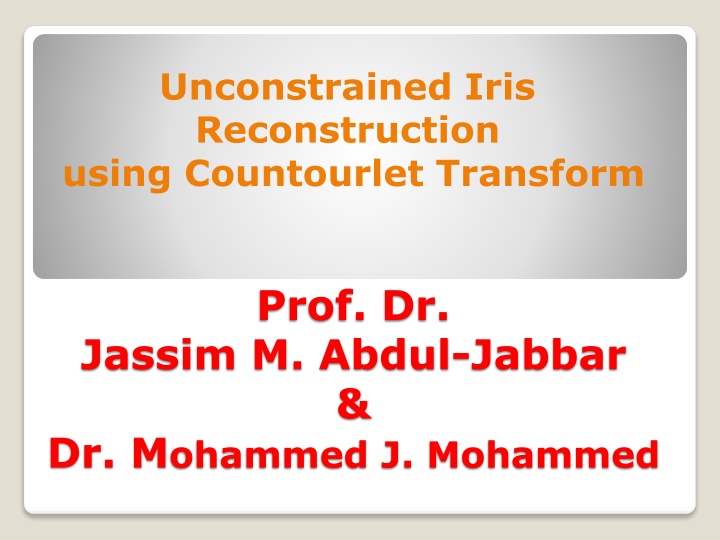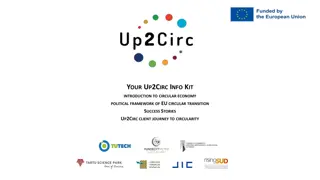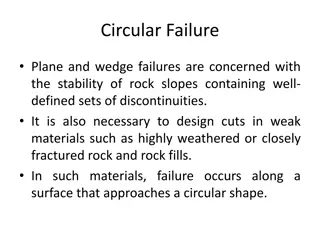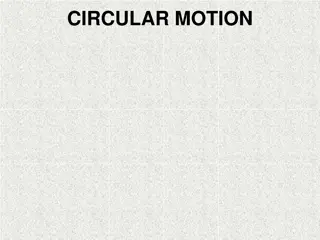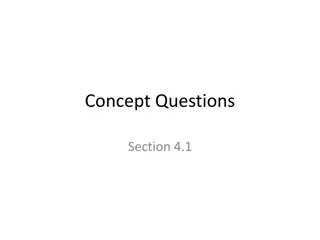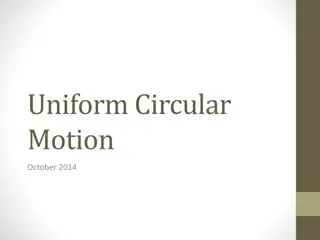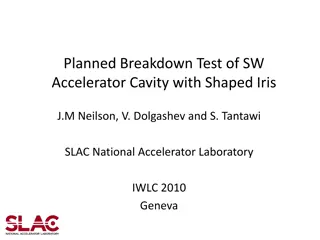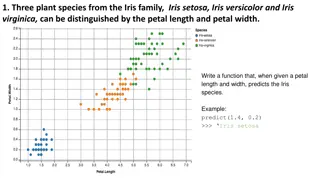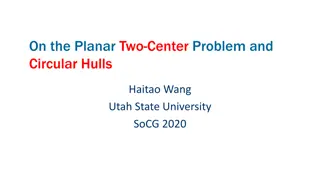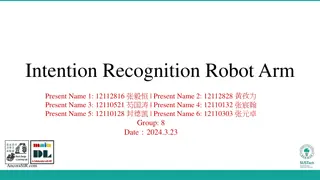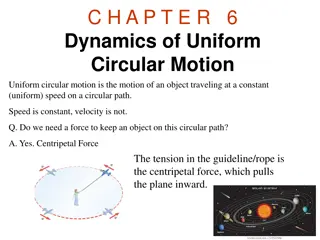Enhancing Iris Recognition with Circular Contourlet Transform
Iris recognition is a reliable biometric identification method due to the iris's unique properties. By incorporating the Circular Contourlet Transform (CCT) into the classical iris recognition algorithm, the feature extraction process can be enhanced to improve recognition rates under unconstrained conditions. CCT allows for a multi-level, multi-directional circular contourlet decomposition, resulting in highly discriminative frequency regions that generate accurate, reduced-fixed-length quantized feature vectors. This approach helps overcome challenges faced in capturing iris images under real-world conditions and ensures high recognition accuracy.
Download Presentation

Please find below an Image/Link to download the presentation.
The content on the website is provided AS IS for your information and personal use only. It may not be sold, licensed, or shared on other websites without obtaining consent from the author.If you encounter any issues during the download, it is possible that the publisher has removed the file from their server.
You are allowed to download the files provided on this website for personal or commercial use, subject to the condition that they are used lawfully. All files are the property of their respective owners.
The content on the website is provided AS IS for your information and personal use only. It may not be sold, licensed, or shared on other websites without obtaining consent from the author.
E N D
Presentation Transcript
Unconstrained Iris Reconstruction using Countourlet Transform Prof. Dr. Jassim M. Abdul-Jabbar & Dr. Mohammed J. Mohammed
Why Iris? Iris is the best biometric tool for human identification because of its properties of - uniqueness, even for a twin. - lifetime stability, doesn t varied with time. - Iris semi-circular shape, which leads to easy segmentation method reflecting high recognition rates. Thus, iris recognition is one of the most stable and reliable means in biometric identification.
Iris Recognition Algorithm A classical iris recognition algorithm usually consists of four steps: -Segmentation, -Normalization, -Feature extraction with coding and -Matching.
Modification Objects * A one or more of these steps (such as segmentation or feature extraction) can be modified to obtain - Small-length best-fit code vector - High recognition rate - Efficient system realization (less-complex computations)
New Circular Contourlet Filter Bank * One of these modifications is to apply a non-traditional step for feature extraction where a new circular contourlet filter bank can be used to characteristics. capture the iris * The idea is based on a new geometrical image transform called Circular Contourlet Transform (CCT).
CCT Vr. Classical CT - - A multi-level-multi-directional circular contourlet decomposition is applied. Highly-discriminative frequency regions due to the use of circular-support decompositions result more extracted high frequencies will be included at each directional region. (more feature components) Resulting in more-accurate reduced-fixed-length quantized feature vectors and reflecting high recognition rates for the proposed system. -
Unconstrained Iris Reconstruction Although, iris is the best biometric tool for human identification, but usually iris images suffer from unconstrained conditions, Ideal image acquisition conditions are assumed in the classical iris recognition system. These conditions may include: - Near infrared (NIR) light source, for clear iris texture and iris look retrieval. - Stare constraints, with open eye. - Close distance from the capturing device. However, when these constraints are relaxed for real conditions, the recognition accuracy in most systems decreases. Recently, different processing methods for iris images captured in unconstrained environments are adopted.
The Proposed System for Unconstrained Iris Reconstruction using CCT Decomposition
Feature Vector (Code Generation) To create our iris feature vector, the following steps are carried out: 1) The resulting 8-sub bands are formed as (Matrix1, Matrix 2, ., Matrix8). 2) Specific sub-features are calculated for each of the 8 matrices.
3) The final iris feature vector is formed by concatenating these specific features as follows: V =[En1,Cont1,Cor1, Hom1, Acor1, Dis1, Ine1, En2, Cont2, Cor2, Hom2, Acor2, Dis2, Ine2, , En8, Cont8, Cor8, Hom8, Acor8, Dis2, Ine2] 4) A final iris feature vector of 56 element can be obtained.
Data Sets - Since 2002, CASIA datasets existed - In 2005, the UBIRIS datasets presented - In 2010, the UBIRIS.V2 dataset and CASIA- IrisV4 were released, containing data captured - in the visual wavelength, - at-a-rang (between 4-8 meters) and - on on-the-step. These dataset are ready for anyone interested in studying iris recognition and useful in accessing the feasibility and in specifying the related recognition constraints.
Results and Conclusions - In some initial results, the accuracy of the proposed method becomes more than 94%. - Since the discrimination between high and low frequencies is based on filters with circular-support cutoff curvatures then robust coefficients can be frequency bands compared to those achieved when using the classical wavelets or even the classical contourlets. - All used filters can easily be realized by masks which reflects again a reduced- complex realization of the whole recognition system. achieved in high -
T Thank you hank you
